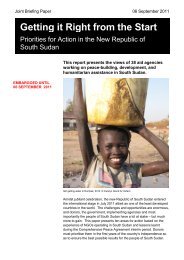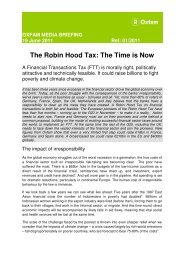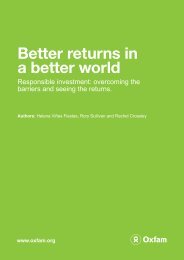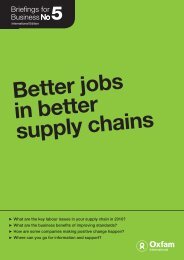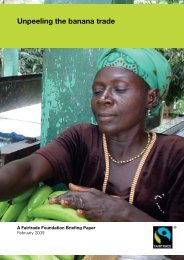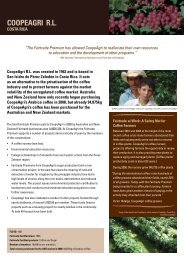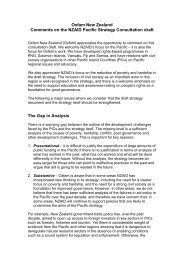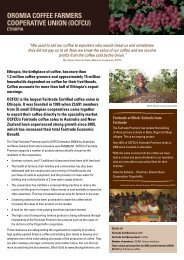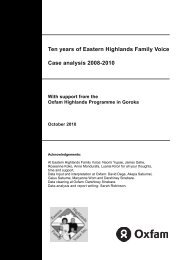Growing a Better Future - Oxfam International
Growing a Better Future - Oxfam International
Growing a Better Future - Oxfam International
- No tags were found...
You also want an ePaper? Increase the reach of your titles
YUMPU automatically turns print PDFs into web optimized ePapers that Google loves.
Four myths about smallholdersThe case against smallholder farms often relies on fourkey misconceptions, born of a lack of familiarity with thelives of poor farmers.1. Low productivityApparently striking data shows that average yields forcereals on small farms in Africa are less than two tonnesper hectare, compared with 50 tonnes on largecommercial farms in Brazil. 143 But smallholder farmsoften have low yields precisely because they use thefactors of production more sparingly. 144 Small farms inAfrica use tiny amounts of fertilizer – about oneeighteenthof those in India, for example. 145 They uselabour rather than capital, and less than five per cent ofthe cultivated area is irrigated. 146 Furthermore, smallfarmers can only dream of the lavish subsidies showeredupon many large-scale farms.Accounting for these other factors in the productivitycalculation massively narrows the gap. Put another way:if small farmers had the inputs, irrigation, and subsidiesenjoyed by large farms, things would look very different.This is why surveys often find that, when the focus isshifted from yields to total productivity, small farms arefound to be more efficient.<strong>Oxfam</strong> sees this time and again in its work with smallfarmers all over the world, such as a recent project inMnembo, Malawi that transformed the lives of 400families.Where increasingly erratic rainfall had sent their maizeyields into terminal decline, now, thanks to irrigation,new seeds, and fertilizers, production has increasedsignificantly and they have diversified into wheat, rice,and tomatoes.‘Case Study: Support for Small-Scale Production inMalawi’ www.oxfam.org/grow2. Aversion to technology and innovation‘Big is beautiful’ adherents maintain large farms arequicker to adopt new technologies, forgetting perhapsthat the Green Revolution in India was led not only bylarge commercial farms, but also by small-scaleproducers. Farmers living in poverty do not grind outtheir existence using primitive technologies and outdatedpractices as a preferred option, rather becauseappropriate technologies for small producers have notbeen a priority for government or the private sector.For example, genetically engineered crop varietiesdeveloped overwhelmingly for large-scale industrialfarms have failed to deliver for poor farmers, and havefailed to make a significant contribution to tacklinghunger, poverty or development.Sub-Saharan Africa has seen countless examples oftechnological success stories at the forefront ofinnovation: smallholders have adopted improved maizeand rice varieties and cassava resistant to pests. 147 In theDadeldhura and Dailek districts of Nepal, <strong>Oxfam</strong> helped15 communities of women and men planting new droughtresistantseed varieties, building and managing newirrigation systems, and adopting new farming practices.‘Case Study: Improving Food Security for VulnerableCommunities in Nepal’ www.oxfam.org/grow54Left: Edward Chikwawaholding the seeds he isabout to plant at theChitimbe Irrigation site.(Malawi, 2008)



